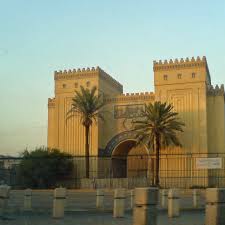The Role and Function of the Shiite Marjaeyya in Baghdad era

This essay seeks answering this question that upon which characteristics of the structure and function of the Shiite Marjaeyya institution in Baghdad era becomes distinguishable and distinctive?
ABSTRACT
This essay seeks answering this question that upon which characteristics the structure and function of the Shiite Marjaeyya institution in Baghdad era becomes distinguishable and distinctive. In order to do so we organized four sections: In the first section the geographical, cultural, social and political backgrounds dominating Baghdad during 4th Hijri century were surveyed.
The results of studies in this section shows that Baghdad amongst the Muslim world cities in which Shiism had a stronger presence, enjoyed some characteristics making it distinctive from the others. Being geographically a resorting place for various Ulama and thinkers, politically as well as socially a constant target for conspiracies and turbulences and culturally an arena for cultural exchange of diverse denominations’ followers, its inhabitants were different from those of Ghom.
The second section of this research shows that Baghdadi Alims recognition sources and study methods were more extensive and comprehensive than those of Ghom making them more able to response people’s needs and having less
Theoretical limitations .
The third section of the research surveys the structure of Shiite Marjaeyya in Baghdad era. In this section it is shown that how Shiite Marjaeyya has evolved through the era of Masoom’s presence to that of Ghaibah . Shiite Ulama in the beginning of Ghaibah era have decided to give an identity to Shiism and started to defend it as a comprehensive identity.
Hence the Shiite society required to demonstrate its identity different from the common muslims. Pursuing this goal, the Shiite Ulama of Baghdad, being more exposed to cultural exchange than the other Bilad’s(cities) Shiite Ulama
and taking a new approach in recognition sources and study methods had started to stabilize their conductive status in the society.
They employed two procedures to stabilize their status: To obtain identity to confronting the opponents and to obtain identity to confronting the proponents.
The fourth section shows juridical, legal, social and political functions of
Marjaeyya in Baghdad era surveying their thoughts and works.
Key words:Role, Marjaeyya status, function, Baghdad era, Ghom era
